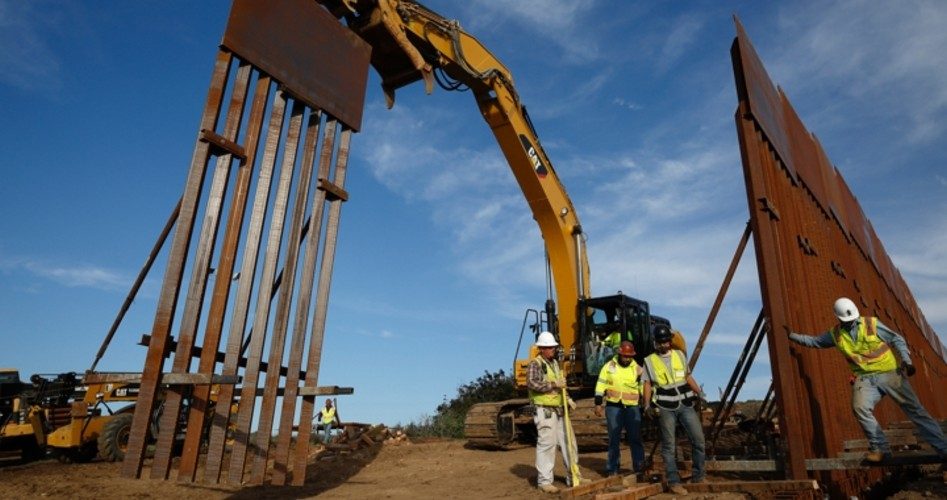
U.S. Customs and Border Protection has stated that the federal government will soon begin construction of more border barriers in the Rio Grande Valley of Texas. Heavy construction equipment was expected to arrive during the week of February 4, a CBP official confirmed on February 5, reported both AP and CNN.
While House Democrats refused to approve a bill that included the $5.7 billion President Trump wanted for the wall, last March Congress approved more than $600 million for 33 miles of new barriers in the Rio Grande Valley. So Customs and Border Protection will move ahead with building what has already been funded.
CBP released a statement last September saying that it planned to construct approximately 25 miles of a levee/border-wall system in Hidalgo County, Texas, and approximately eight miles of a border wall system in Starr County, Texas, and noted that the border wall system project in the Rio Grande City Station area of responsibility may include an additional four miles.
During his State of the Union speech on February 5, Trump stated that a border wall would greatly reduce the flow of illegal migrants and drugs across the border.
“It will get built,” the president said, describing the wall as “a smart, strategic, see-through steel barrier — not just a simple concrete wall.”
AP cited CBP’s statement that it intends to start construction on federally owned land and noted that “environmental advocates” expect the government to use land that’s part of the Lower Rio Grande Valley National Wildlife Refuge.
A CNN report observed that the border-barrier construction is running into opposition from the National Butterfly Center in Mission, Texas, a 100-acre wild butterfly habitat. A statement on the National Butterfly Center website asserts, “Not all birds can fly over the wall, nor will all butterfly species. For example, the Ferruginous Pygmy Owl, found on the southern border from Texas to Arizona, only flies about 6 ft in the air. It cannot overcome a 30 ft vertical wall of concrete and steel.”
In response to that statement, a man identifying himself as William B (“a Texas birder”) posted this challenging response: “Your web site says ferruginous pygmy owls only fly about six feet in the air and can’t overcome a wall 30 feet high. Actually, according to Texas A&M, they nest as high as 40 feet above the ground (Reference: The Texas Breeding Bird Atlas, Texas A&M).”
This would not be the first time that “environmental advocates” employed inaccurate arguments with emotional appeal to stop projects.
CNN reported that the National Butterfly Center has been fighting the wall construction in court for more than a year, filing its first suit against the Department of Homeland Security over the government’s plans in December 2017.
In a response to the lawsuit, DHS Secretary Kirstjen Nielsen published an environmental waiver and found that certain areas within the Rio Grande Valley region, including the area along a levee running through the butterfly center’s property, “are areas of high illegal entry and require construction of additional border infrastructure.”
Photo of wall construction on the San Diego-Tijuana border: AP Images
Related articles:
Don’t Just Blame Pelosi; Lack of Border Wall Funding Is Bipartisan
Will Private Property Rights Stop the Trump Wall?
Trump Discusses a Border Wall Topped With Solar Panels and With See-through Openings
Trump Signs Executive Orders to Build Border Wall and Strengthen Immigration Enforcement



